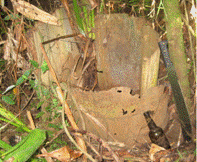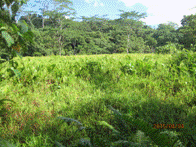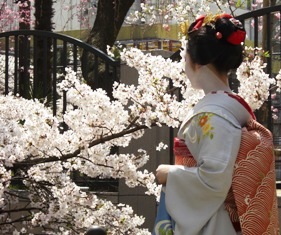JICA Volunteers in Palau
◆Alii from Palau!
Mr. Yasuo Ishida
JICA Volunteer
Statistician, Ministry of Finance
I work in the Office of Planning and Statistics of the Ministry of Finance. This article refers to my statistical work in the office and outcome of my weekend research: "Japanese farmers' life in the period of Japan's Age".
Statistical work in the Office
►Analysis of Tourism Statistics
I analyzed the results of the Palau Tourism Survey (PTS) which the South Pacific Tourism Organization (SPTO) carried out in 2014 through the Palau Visitors Authority. After calculating the average expenditure by excluding statistical outliers, I suggested that the new average expenditure be used for the estimation of "Travel" for Balance of Payments (BOP) with some adjustment.
►Planning of Sampling Survey on Labor Force
I made a plan of Labor Force Survey to gain detailed labor statistics which were indispensable for policy-making of the government. This survey is expected to be conducted regularly as an intercensal sampling survey using the sampling frame from the 2015 Population Census.
►Lecture on the Basics of Sampling Survey
The practical knowledge on sampling technique and probability theory are required critically for conducting the survey and providing accurate statistics. Then, the Basics of Sampling Survey which focused on the practical issues will be lectured together with the detailed plan of Labor Force Survey in the seminar in coming July or August in the Ministry of Finance.
►Other activities
Support for planning of the Palau Youth-Policy Assessment Survey, suggestion on editing of Statistical Yearbook and so on.
Japanese farmer's life in the period of Japan Age
►Agricultural development in Kaitaku-mura
Japan governed the islands of Palau for a quarter century starting from 1919. Four "Kaitaku-mura" such as Asahi (in Ngarmiskan area), Shimizu (in Ngardok area) and so on were established in 1924 in Babeldaob Island in order to develop unused land and to promote agriculture and the related industries. The farming families, of which number was only eight in 1926, increased to 376 in total in 1940.
► Economic life
Each farming family was allotted the unused land of 5 hectare area from Nanyo-cho. The farmers started their work from deforestation and uprooting or development of wilderness to create farmland. And then, they cultivated various crops such as pineapple, taro, vegetable and so on in the newly-developed farmland. They made their living by selling their harvest. The old Palauan said that their life had been not so rich but not so poor, and very convenient.
► Housing
The farmers' houses were constructed near the rivers in the villages. Most of the houses were raised-floor style of which foundations were made from logs to avoid splashes of heavy rain. The structure of their houses was mostly boards or tin for the roof, and boards for wall and floor.
►Current "Kaitaku-mura"
The farmlands, which the farmers had cultivated overcoming their hardships, has turned into wasteland. The wooden farmhouses vanished away without a trace in Jungle. The signs that farmers had lived there were only drum cans, buckets, pans, small pieces of tin and so on which crumbled with rust, and half-buried bottles of Kirin beer. The motorboat, which must have been the most important means forthe transportation, was going to crumble into decay in the wetland.

Decayed drum can

Farmland turned into wasteland
Conclusion
It was just for around 20 years until the War got intensified that the Japanese farmers could live their hard but peaceful life in the Kaitaku-mura. The evidences of the farmer's life are falling into decay in the Jungle and are going to fade away from the people's memory.
I desire from my heart that the Japanese farmer's life be researched still more and be remained on record as a page in the history of Babeldaob Island in Palau.
©Embassy of Japan in the Republic of Palau
P.O. Box 6050 Koror, Republic of Palau 96940

